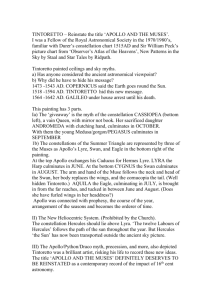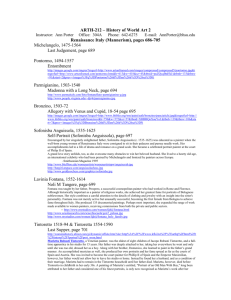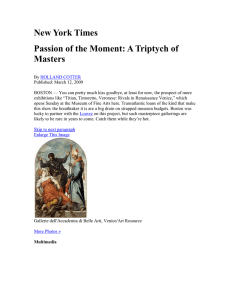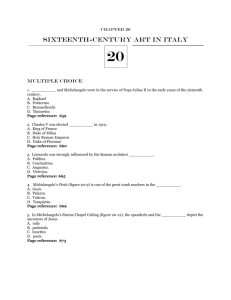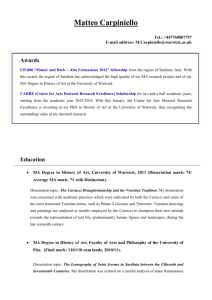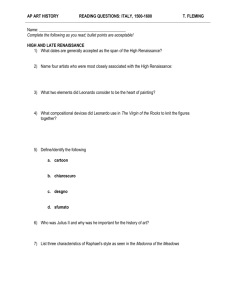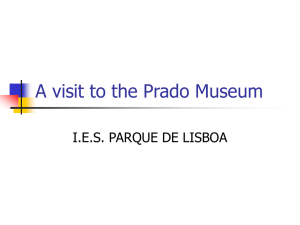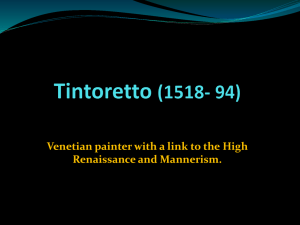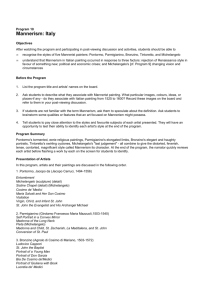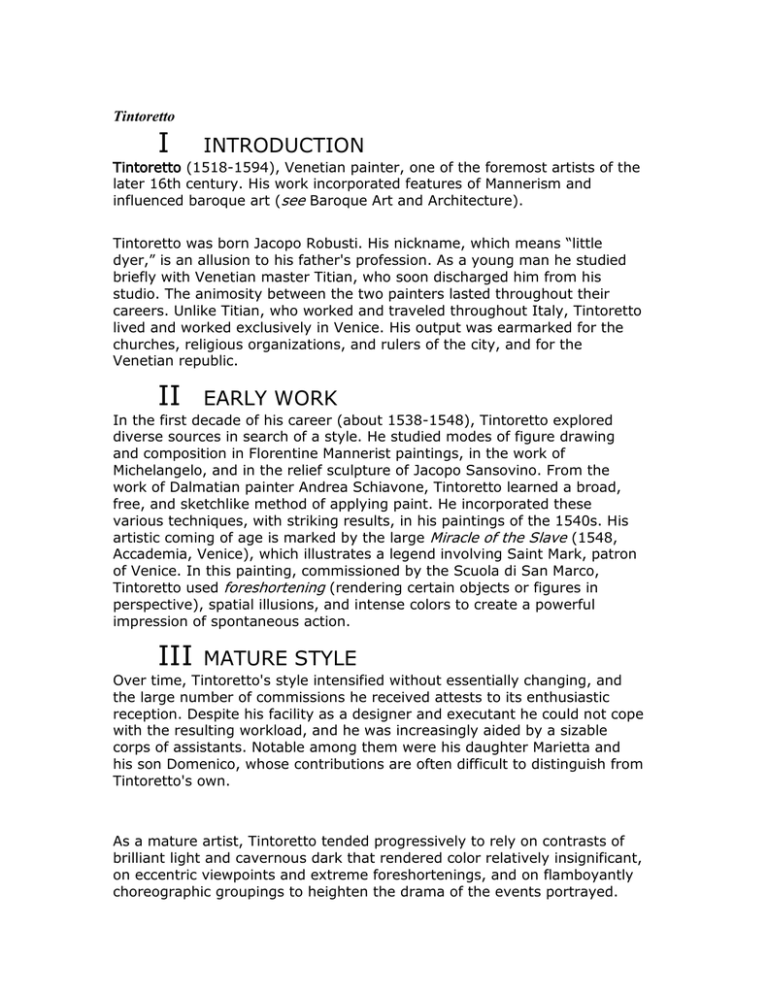
Tintoretto
I
INTRODUCTION
Tintoretto (1518-1594), Venetian painter, one of the foremost artists of the
later 16th century. His work incorporated features of Mannerism and
influenced baroque art (see Baroque Art and Architecture).
Tintoretto was born Jacopo Robusti. His nickname, which means “little
dyer,” is an allusion to his father's profession. As a young man he studied
briefly with Venetian master Titian, who soon discharged him from his
studio. The animosity between the two painters lasted throughout their
careers. Unlike Titian, who worked and traveled throughout Italy, Tintoretto
lived and worked exclusively in Venice. His output was earmarked for the
churches, religious organizations, and rulers of the city, and for the
Venetian republic.
II
EARLY WORK
In the first decade of his career (about 1538-1548), Tintoretto explored
diverse sources in search of a style. He studied modes of figure drawing
and composition in Florentine Mannerist paintings, in the work of
Michelangelo, and in the relief sculpture of Jacopo Sansovino. From the
work of Dalmatian painter Andrea Schiavone, Tintoretto learned a broad,
free, and sketchlike method of applying paint. He incorporated these
various techniques, with striking results, in his paintings of the 1540s. His
artistic coming of age is marked by the large Miracle of the Slave (1548,
Accademia, Venice), which illustrates a legend involving Saint Mark, patron
of Venice. In this painting, commissioned by the Scuola di San Marco,
Tintoretto used foreshortening (rendering certain objects or figures in
perspective), spatial illusions, and intense colors to create a powerful
impression of spontaneous action.
III
MATURE STYLE
Over time, Tintoretto's style intensified without essentially changing, and
the large number of commissions he received attests to its enthusiastic
reception. Despite his facility as a designer and executant he could not cope
with the resulting workload, and he was increasingly aided by a sizable
corps of assistants. Notable among them were his daughter Marietta and
his son Domenico, whose contributions are often difficult to distinguish from
Tintoretto's own.
As a mature artist, Tintoretto tended progressively to rely on contrasts of
brilliant light and cavernous dark that rendered color relatively insignificant,
on eccentric viewpoints and extreme foreshortenings, and on flamboyantly
choreographic groupings to heighten the drama of the events portrayed.
The full power of this method is best exemplified by Tintoretto's treatment
of the theme of supernatural incursion into human events—as in three
paintings of miracles from the legend of Saint Mark executed from 1562 to
1566 for the Scuola di San Marco, the Last Supper (1594) in the Church of
San Giorgio Maggiore, and many of the biblical paintings with which
Tintoretto adorned the ceilings and walls of the Scuola di San Rocco
between 1564 and 1587. These last constitute the greatest pictorial
enterprise of his career and a masterpiece of Renaissance art (see
Renaissance Art and Architecture). Almost equally extensive is the cycle of
paintings Tintoretto and his assistants executed for the Doge's Palace
(Palazzo Ducale), culminating in the vast Paradise (1588-1590), but in
these works the level of inspiration is less consistent and the assistant's
share larger.
IV
INFLUENCE
Tintoretto's preference for diagonal compositions that plunge or zigzag into
deep space, the commanding theatricality of his lighting, and the overall
dynamism and expansiveness of his style were emulated by such pioneers
of the baroque style as Flemish painter Peter Paul Rubens and members of
the Italian Carracci family (see Carracci, Annibale). His effect on Venetian
painting was still greater, and after his death in 1594, Venetian painting
declined precipitously.
Contributed By:
Francis L. Richardson
1
1"Tintoretto."Microsoft® Encarta® Encyclopedia 2001. © 1993-2000 Microsoft
Corporation. All rights reserved.

